SV9FBG Hosting SX9C Contest Team
On the southeastern coast of Crete, facing Egypt and Libya, there is a medium-size town called Ierapetra. This is where the island is narrowest. The distance to Africa is about 360 km or 200 miles.The population of the municipality is about 26 thousand people and at least 25 of them are licenced radio amateurs, according to qrz.com website. The most impressive station and antenna farm in the area belongs to Giannis, SV9FBG. He is almost 50 years old and received his Amateur Radio licence in year 2000 after many years of 27 MHz CB enthusiasm. This is a very common gateway for present day radio amateurs. Discovering new possibilities in the whole spectrum of shortwave bands eventually lead Giannis to learn and invest in serious contesting. He lives in the center of town and pretty soon it turned out to be virtually impossible to do anything meaningful from his apartment. He is in the farming business and decided, a few years ago, to move his station to the rural area out of town where he has greenhouses and olive trees. Crete has a well developed agricultural infrastructure because of the climate and fertile valleys. The mountain range running along the island condenses the moisture in the air and the island is green. One might think that the mountains stop the heavy winds in the middle of the Mediterranean Sea and give protection for the local antenna owners. Wrong.
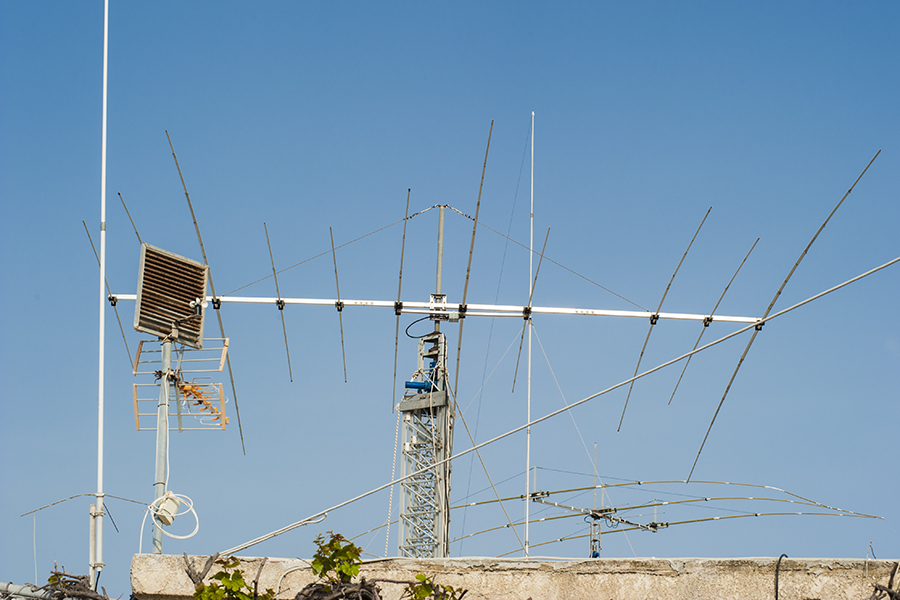
The antenna towers at the antenna farm of Giannis, SV9FBG are always lowered because of the prevailing winds. They are extracted mainly for contest weekends. The most dangerous winds are those coming from the north, dangerously accelerating after passing the mountains. The winds from Africa slow down in front of the mountain.
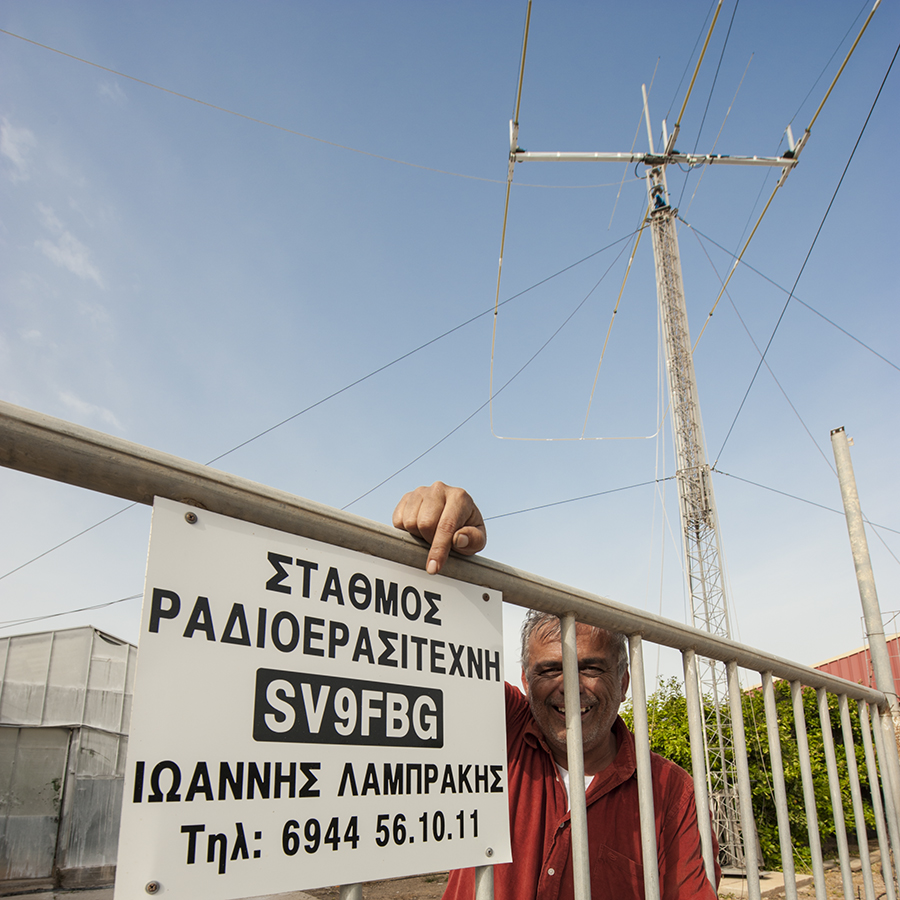
There is law in Greece that all antenna towers and installations must be identified, indicating the owner. Giannis points to the sign indicating his call sign, name and telephone number. Behind him stands a 23-meter tower with UB40-MX multi-band antenna. It works as a 2 element Moxon array for 7 MHz and as a 3 element Yagi for other bands between 10 MHz and 50 MHz.
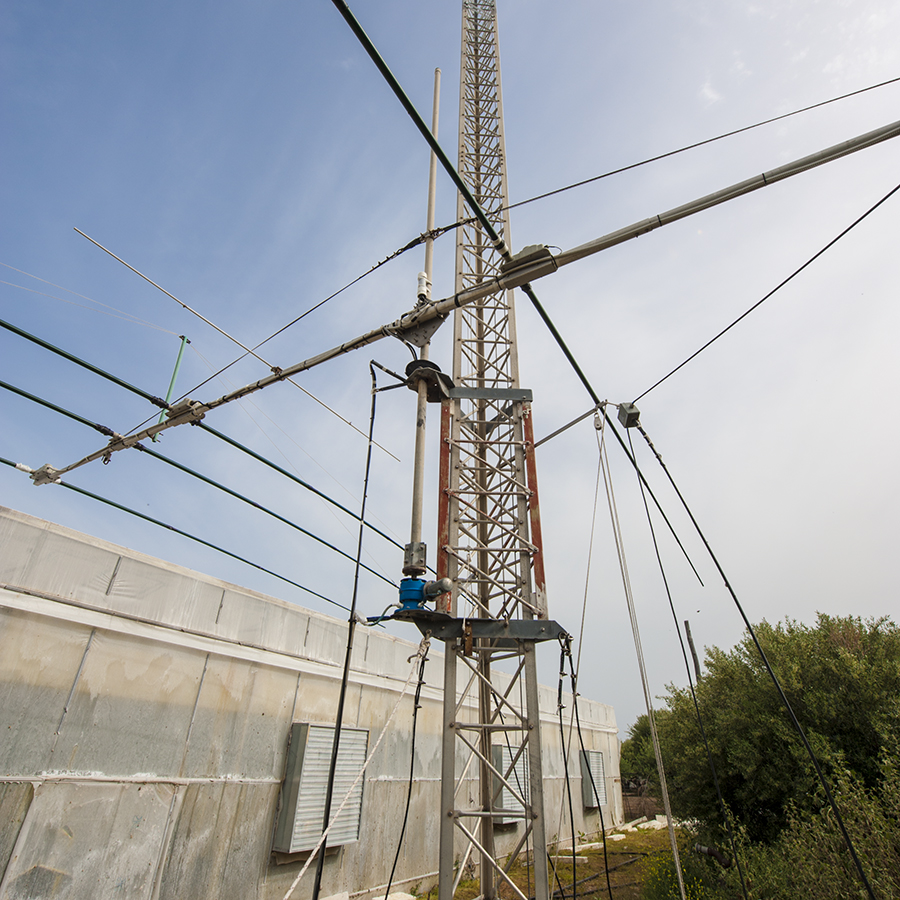
The second huge tower of SV9FBG with a large SteppIR array next to one of the greenhouses in the farm. The metal frame of a hothouse is used as a counterpoise for a low-band vertical antenna. Giannis grows tomatoes and sweet peppers, known as bell peppers in North America.
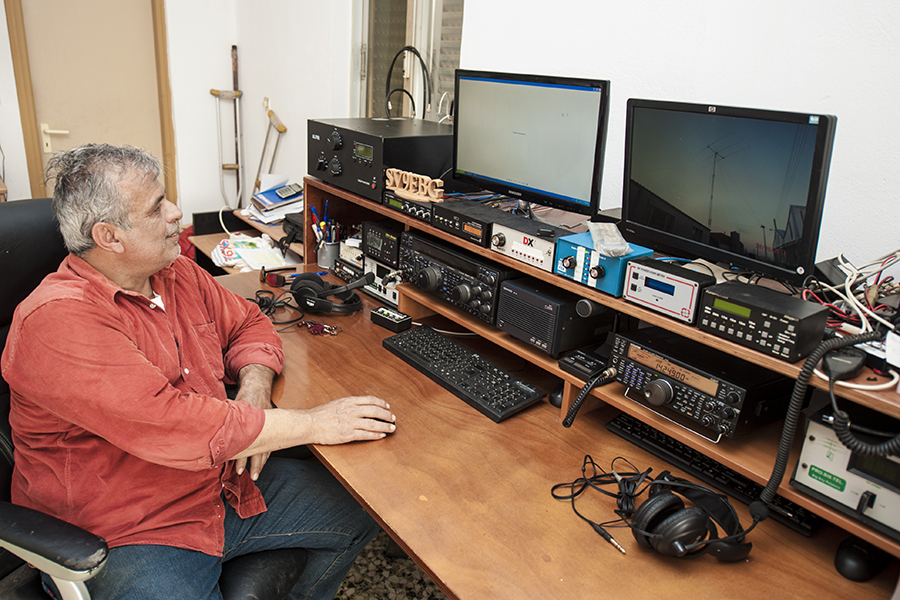
Giannis in the radio room. There are provisions to allow at least two operators be on the air at the same time. The group gathered around Giannis consists of at least 5 operators and use the call sign SX9C in contests. Sometimes they even arrange a Multi-Multi events inviting people from the mainland and abroad.

The SteppIR antenna is lowered for repair. The springtime is a very busy time for people growing vegetables in hothouses, so the antenna work will be done in the summer. Giannis gets help from other members of the SX9C group.
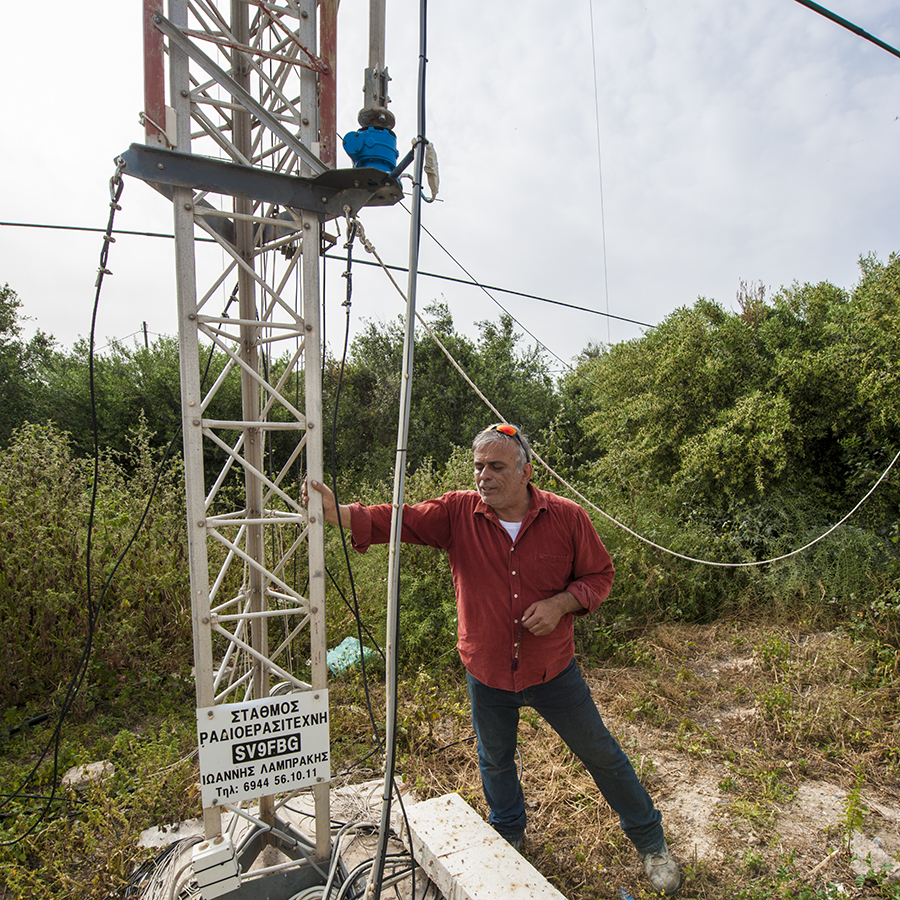
Giannis, SV9FBG at the base of the 15-meter high tower with the SteppIR array. This tower also has an ID-tag at the base.

Giannis says: The contest weekends are a lot of fun. We get together, sometimes even the family members join us, and while some of us are operating, others have barbecue and socialize informally. Our location is not advantageous so we can't make huge scores. The paths to the USA and Japan are not clear from here, the only open direction is south and there are not many stations in Africa. We are in Europe and get mostly 1 point QSOs, but we fight hard and are getting better and more experienced for every contest.
Bottom line:
What we observe, mainly in Europe and Asia, that many new radio amateurs are less technology obsessed. The equipment is very advanced and complex. To be on the air one does not have to understand what is inside the black box, no need to build anything from scratch, failures are rare because of protective circuits and foolproof software. The requirements for getting a licence are moderate and more people without technical background are attracted to this hobby. On the air we can meet people of all walks of life who share this interest in random personal wireless communication beyond the borders and cultures.
Henryk Kotowski, SM0JHF
text and photographs
May 2017


